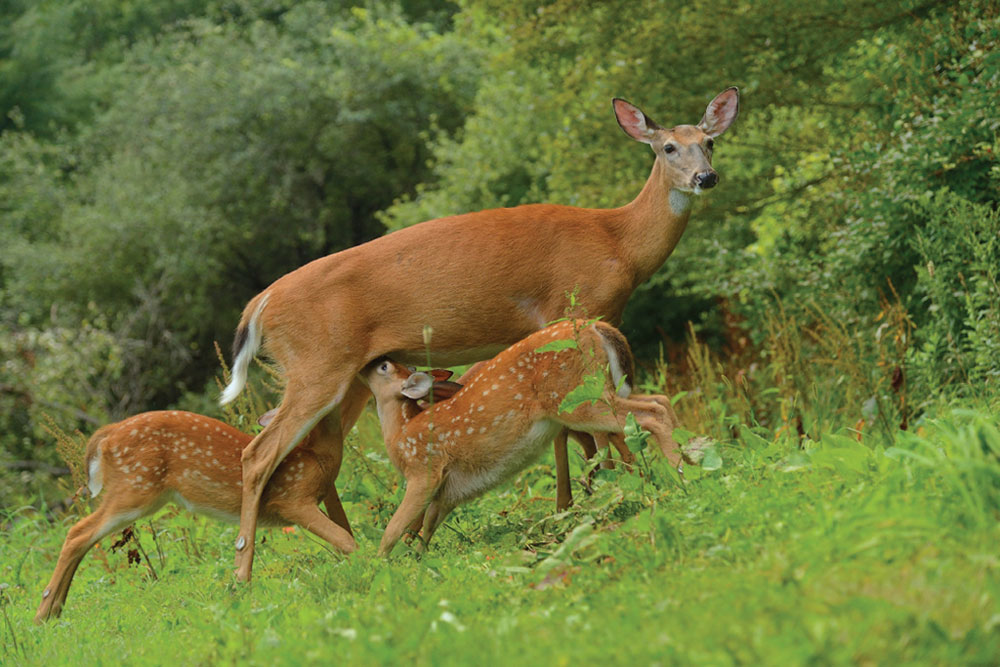Charles Alsheimer

During spring and early summer, whitetail does are near the end of their 200-day gestation cycle and birthing begins. Within minutes of birth, most fawns will attempt to stand and take their first steps. They are very vulnerable to predators, and at this point their survival depends on the doe. Many factors determine whether they will make it through the first week of life.
After giving birth, the doe eats the afterbirth, cleans the area, and bathes her fawns to eliminate scent. This reduces the likelihood of predators locating the newborns. Usually a fawn can walk a short distance within a half-hour of birth. To stay one step ahead of predators, a doe will move her fawn(s) shortly after birth and constantly relocate them during the first few weeks. To enhance survival, a doe will also force her fawns to bed apart and will almost never bed with them.
Does tend to rule the woods when fawns are vulnerable. Seldom will a doe let another deer get close to her fawns during their first month of life. By this time, most fawns are large and strong enough to outrun the majority of their enemies. Around this time, fawns begin bedding and traveling with the doe wherever she goes. In addition to nursing, fawns will be foraging by the end of June.
Generally, a doe will feed and groom her fawns separately, two to three times each day. When a doe seeks her fawn at feeding time, she approaches the fawn’s bedding area, uttering mews and low grunts. Once the fawn hears its mother’s call, it will rise from its bed and prance to the doe’s side before locking on to her nipples and drinking up to 8 ounces of nourishing milk.































